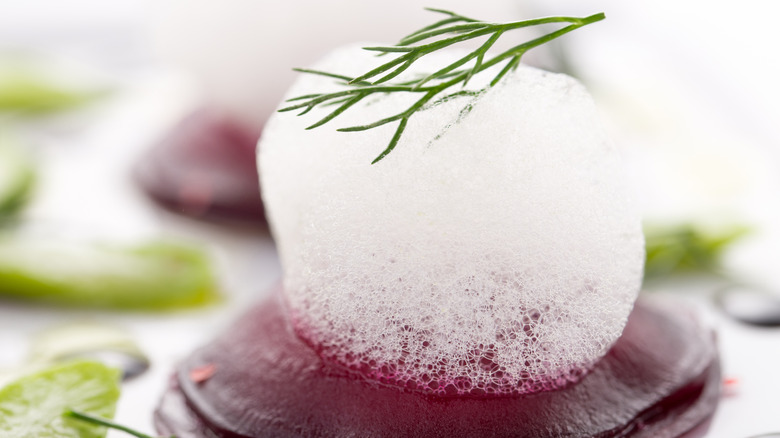The Molecular Gastronomy Trend Ina Garten Isn't Impressed By
Even celebrity chefs have limited tolerance when it comes to accepting viral food trends and popular fads. As told to the Wall Street Journal, Chef Ina Garten admits that she's not one for some of the crazes of the food world, instead preferring the tried-and-true basics of simple, home-cooked meals. Yet out of all the gastronomical advances the culinary industry has seen, there was one wave, in particular, that Garten said "drove [her] crazy," and that was foam.
"I like when I see a recipe that has the title, when you read it, you know what it tastes like. If you see a title, 'Chocolate cake with lemongrass,' you're like, 'Huh, how does that taste?' But if you see a title, 'Chocolate cake with hazelnuts,' you know exactly what it's going to taste like," Garten explained to the Wall Street Journal. Garten refers to some of the more modernist foams that take various ingredients and combines them with air, often resulting in unexpected flavors that adorn dishes or stand alone as unique presentations.
An ingredient that can cause confusion
What first exploded onto the scene in the 15th century has since become a defining part of a cuisine category known as molecular gastronomy. Foams can refer to more commonly accepted and known appearances like marshmallows, mousse, and even the head of a poured beer, but foams can also be made to taste like something else entirely — an aspect that gave Garten pause when trying more innovative kinds of dishes.
Made with stabilizing and gelling agents and a base made from purées, juices, or stock, foams offer an interesting textured ingredient to serve diners. Foam can be found on top of cocktails and decorating dishes served in fine dining settings and can vary in temperature, color, and texture. With so many variations, it is perfectly reasonable that Garten could be surprised by one of these presentations.
This style of cuisine isn't for everyone and Garten reminds us that even professional chefs have their own proclivities when it comes to dining.

